Secret Weapon
The inside story of a new fuel that is powering some of the world’s top cyclists
Words: Chris Sidwells
Photos: HVMN and Offside
There’s a new fuel with measurable performance gains being used in top-level road racing, or so the recent rumour rattling around cycling has gone. Well now we can confirm it, the fuel is ketone ester and seven out of the 22 teams in this year’s Tour de France used it. We don’t know which teams, the company who developed the product commercially are contractually unable to tell us, but performance gains are such that you only have to look at the front of the peloton to guess.
This is next-level stuff, a quantum leap in endurance fuelling commercialized by a Silicon Valley biotech company called HVMN. They approached us with news of an up-coming hour record attempt they are involved in. But more of that later, first let’s look at this new fuel.
HVMN’s ketone ester, consumed as a drink, is the result of more than 15 years of research by DARPA, the research arm of the United States army; the NIH, the US government agency responsible for biomedical and public health research, and Oxford University. Research was initially funded by the US military to the tune of 60-million dollars. HVMN’s customers include the US Department of Defence, NFL teams and world champions in boxing and MMA.
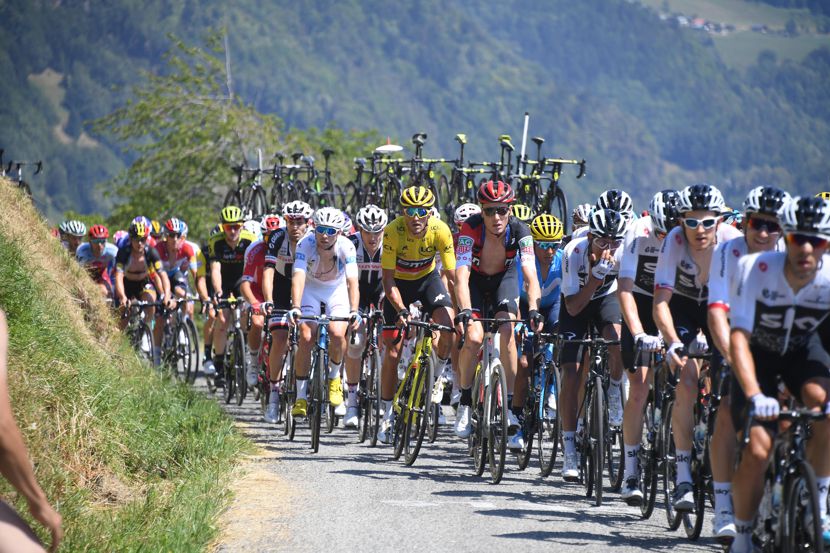
Science explained
The science of ketones, and how their drink boosts performance is explained by HVMN’s co-founder Michael Brandt. “Ketones are produced naturally when the body runs out of carbohydrates to burn, or when fasting, or when engaged in extreme endurance activities,” he opens.
Next he points out that; “Ketones are a very clean-burning fuel source and will support a similar level of power output as glucose from carbohydrates, of which there are only small reserves in the body. Plus our bodies can only process a limited amount of ingested carbs while exercising. The body will use ketones in preference to glucose, so preserving glucose which is stored in the body as glycogen.”
So if ketone can be ingested as a drink, without going to the extremes needed to produce it naturally, it is a usable fuel that will power muscles in constant hard aerobic efforts, just like glucose. HVMN has done that with its commercially available ketone ester drink.
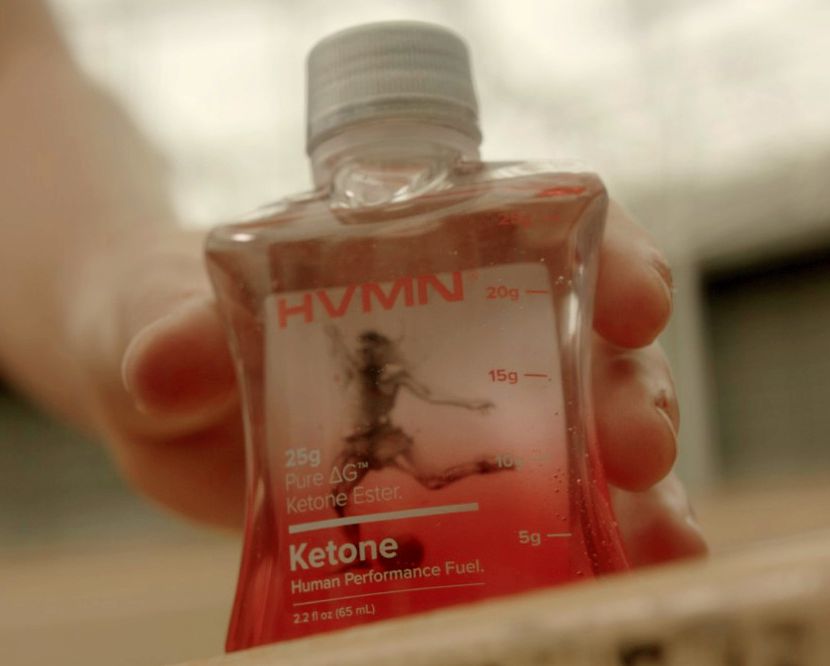
It’s not cheap; “About 30 dollars a dose,” says Brandt, but then says; “It costs 800 dollars to enter Ironman, 250 dollars for some marathons. People buy expensive bikes to give them a slight gain. Our product gives a measurable gain, and when compared with the other costs in sport, it stands up.
“Having glucose and ketones to burn is like having two batteries in the body, two fuel sources, like a hybrid car,” Brandt confirms. “Ingesting ketone preserves carbs, our drink is bioavailable so it goes directly into the mitochondria, the organelles in cells where fuel is burnt to create energy.
“What’s more, ketone burns cleaner than glucose and is very efficient, requiring 28 percent less oxygen to burn than glucose. That means more power and less lactate build up. It’s questionable whether ketones would help top-end power, so sprints, but for extended efforts from 30 to 40 minutes onwards, then we know it helps,” Brandt says.
Dr Pete Cox, a clinician at Oxford University underlines what Brandt says. He wrote the first paper on nutritional ketone, and says; “It’s really interesting; with a single drink of nutritional ketone you can do the same exercise with completely different metabolism.”
Big news
This is big news because the human body can only store limited amounts of carbohydrate as glycogen, which is converted to glucose as needed, maybe only 90 minutes to two hours’ worth depending on the level of effort. And there is only so much ingested carbohydrate the body can process per hour to replenish its glycogen stores. So the availability of glucose from carbohydrates is a performance limiter, because the body’s other main fuel, fats, can’t support higher intensity efforts on its own.
The body burns fats at lower effort intensities, but as intensity increases it relies increasingly on glucose, and although even the skinniest pro racer has hours and hours of fat to burn, he or she has very limited supplies of glycogen and cannot process consumed carbohydrates quickly enough to replace them.
Eventually, in a race with repeated constant efforts lasting several hours there’s a danger of glycogen depletion, and if that happens the rider has to slow down, often dramatically. This is the dreaded ‘bonk’, often referred to as blowing up. But when ketones are available to use at the same exercise intensities, the threat of having to slow down is very much reduced. In short, athletes can ride a little harder for longer on the dual fuel mix of carbs and ketone.
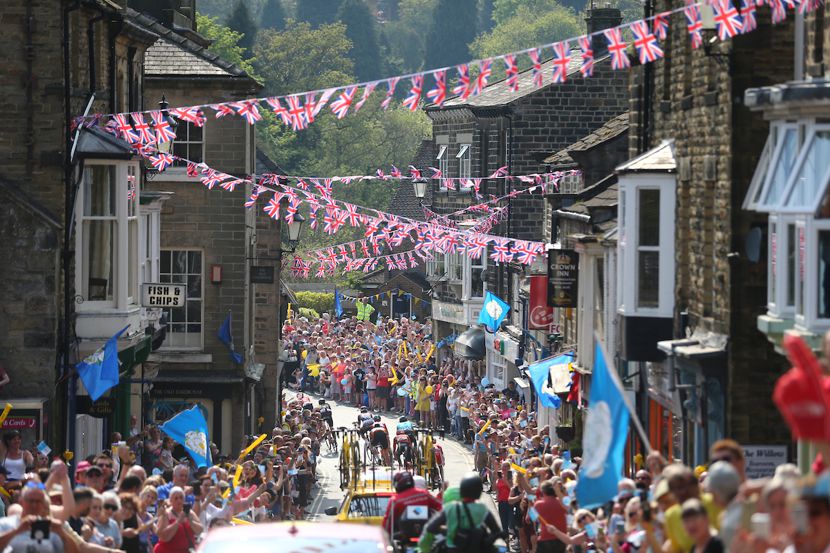
In a study of 39 cyclists, including some former Olympians, on average they rode 400 metres further in 30 minutes after consuming a ketone energy drink than those using energy drinks based on carbohydrates or fats. The ketone users also had less lactate build up in their blood.
This experiment gave HVMN an idea, an experiment within a competitive situation. The company is backing an Italian cyclist, Vittoria Bussi in her upcoming attempt on the world hour record, which because of its relatively controlled environment; indoors, one rider on the track, one bike, one gear ratio, is arguably the purest expression of endurance cycling ability.
Bussi has attempted to break the record before, in 2017, but she failed by 400 metres. See the symmetry? Bussi failed by 400 metres, the experiment showed improvements of 400 metres using ketone ester in 30 minutes, so maybe consuming the drink can help give her the 400 metres she needs to break the record.
The Hour Record is the nearest a bike race gets to being a controlled experiment. As a maths PhD, Bussi can even express a successful hour record attempt as a mathematical equation. This is what she told us about her record attempt.
Vittoria Bussi- The interview
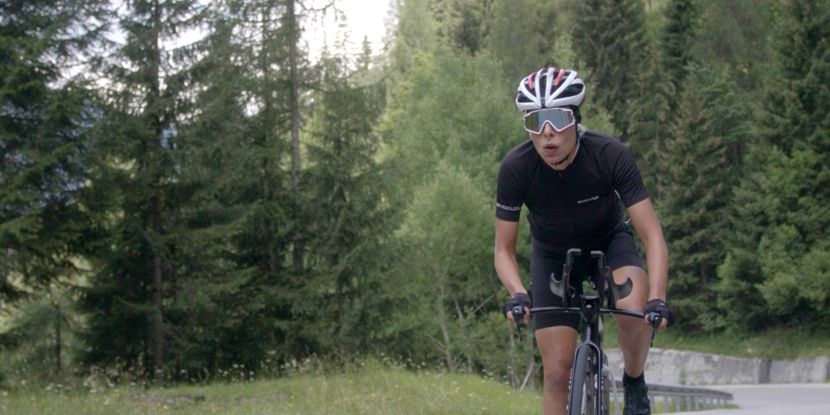
CL: What attracts you about the world hour record, do you see it as a physical challenge or an academic one, or a combination of both?
VB: “A Combination. Being smart is better than just being strong.”
CL: Can a world hour record distance be expressed as a mathematical equation?
VB: “Yes it can, I can write it out for you as follows:-
“The distance covered in the hour shall be calculated as follows:
D = (L Pi x TC) + Di C
Di C = L Pi x TRC
TTC
Di C = L Pi x TRC
TTC
Where:
D= distance covered in the hour
L Pi = length of the track
TC = number of complete laps before the last lap
Di C= additional distance
TTC= time of the last complete lap
TRC = time remaining to ride at the beginning of the last lap
D= distance covered in the hour
L Pi = length of the track
TC = number of complete laps before the last lap
Di C= additional distance
TTC= time of the last complete lap
TRC = time remaining to ride at the beginning of the last lap
CL: You are attacking the record at 1900 metres altitude, and most recent women’s records have been set at altitude, whereas the men’s records have been set at sea level. Why have you chosen to go at altitude?
VB: “If body adapts well, air density at altitude is lower so potentially an advantage. But if the body doesn't react well, then there is no advantage.”
CL: Is there a formula for determining a sweet-spot between oxygen density in the air and the lower density of air at altitude?
VB: “Yes, but the point in my opinion is to see how your body reacts to altitude, more than looking at equations in this particular case.”
CL: Air pressure is a big factor, have you allowed time for pressure systems be optimal at your chosen venue for the record?
VB: “If body adapts well, air density at altitude is lower so potentially an advantage. But if the body doesn't react well, then there is no advantage.”
CL: Is there a formula for determining a sweet-spot between oxygen density in the air and the lower density of air at altitude?
VB: “Yes, but the point in my opinion is to see how your body reacts to altitude, more than looking at equations in this particular case.”
CL: Air pressure is a big factor, have you allowed time for pressure systems be optimal at your chosen venue for the record?
VB: “Yes we keep track of changes of it during the day.”
CL: What are the physical demands of the hour record?
VB: “Being out of my comfort zone from the start, and holding it for one hour. Plus mental effort to stay focused during those slightly less than 200 laps.”
CL: What are the physical limiters that must be overcome to set a new world hour record?
VB: “Training is extremely demanding, three to four times a week you have to convince yourself to suffer in a way your body struggles to support.”
CL: What specific training sessions do you do to address those limiters?
VB: “It's a secret for now, but a lot of the out of comfort zone sessions.”
CL: Could you give an example of a typical week of training you are doing now?
VB: “Being out of my comfort zone from the start, and holding it for one hour. Plus mental effort to stay focused during those slightly less than 200 laps.”
CL: What are the physical limiters that must be overcome to set a new world hour record?
VB: “Training is extremely demanding, three to four times a week you have to convince yourself to suffer in a way your body struggles to support.”
CL: What specific training sessions do you do to address those limiters?
VB: “It's a secret for now, but a lot of the out of comfort zone sessions.”
CL: Could you give an example of a typical week of training you are doing now?
VB: “These are still my secrets, like the above question. But I try to be in the track as much as possible.”
CL: Are races included in your training for the hour record, or are you only doing specific training aimed at the record?
VB: “Specific training, also because I am not part of a UCI team so every UCI race I want to do, I have to find a team to welcome me as a guest rider. If I can, I do UCI time trial races.”
CL: Do you use ketones in training or tests, and have you seen empirical evidence that their use improves your performance?
VB: “Absolutely! It is an extra source of energy that helps me, especially in the last part of my efforts when usually I feel instead a drop in energy.”
CL: Aerodynamics is a crucial factor in the hour record, are you working with a specialist in this field? If so who, and what improvements have you been able to make?
CL: Are races included in your training for the hour record, or are you only doing specific training aimed at the record?
VB: “Specific training, also because I am not part of a UCI team so every UCI race I want to do, I have to find a team to welcome me as a guest rider. If I can, I do UCI time trial races.”
CL: Do you use ketones in training or tests, and have you seen empirical evidence that their use improves your performance?
VB: “Absolutely! It is an extra source of energy that helps me, especially in the last part of my efforts when usually I feel instead a drop in energy.”
CL: Aerodynamics is a crucial factor in the hour record, are you working with a specialist in this field? If so who, and what improvements have you been able to make?
VB: “The main person I’ve worked with is Simon Smart of Drag2Zero, wind tunnel tests helped to improve my position, and have helped with my choice of material.”
CL: What bike and equipment, including clothing and helmet, will you use?
CL: What bike and equipment, including clothing and helmet, will you use?
VB: “Giant trinity frame with Walker Brother wheels, helmet and skinsuit from Endura, Ceramic Speed bearings, Vittoria tubulars.”
Cl: You have already made an attempt at the hour record, do you think the knowledge gained in that attempt will help you, if so in what way?
VB: “Yes, I learned that it is important to balance my effort over the whole hour.”
CL: Do you use mental techniques to help you, if so can you tell us what they are?
VB: “Standard help from my mental coach. But the real secret is the support of family, friends and Rocco, who is my husband.”
CL: Your previous attempt fell 400 metres short of the record distance, does the fact that tests carried on riders who have ingested HVMN Ketone have cycled 400 metres further in 30 minutes provide a significant mental boost for your next attempt?
VB: “Yes, I’m absolutely confident about that.”
In conclusion
The outcome of Vittoria Bussi’s hour record attempt, which is scheduled for September 12th this year at the velodrome in Aguascalientes in Mexico, will be interesting not just as a sports performance but as a possible verification of the effectiveness of ketone energy drinks. In theory the drink will support her effort at an optimal pace for the whole hour, plus the observed effect of less lactate production and lower oxygen consumption in cellular energy production should provide her with a measurable performance boost.
Two high performance fuel sources, where before there was only one in normal conditions to fuel high effort intensities, is a big deal in sports nutrition. And, Brandt says; “HVMN has had WADA and FDA approval for our product.”
For more detail on HVMN click here.
Cycling Legends fitness stories are sponsored by
For more detail on HVMN click here.
Cycling Legends fitness stories are sponsored by

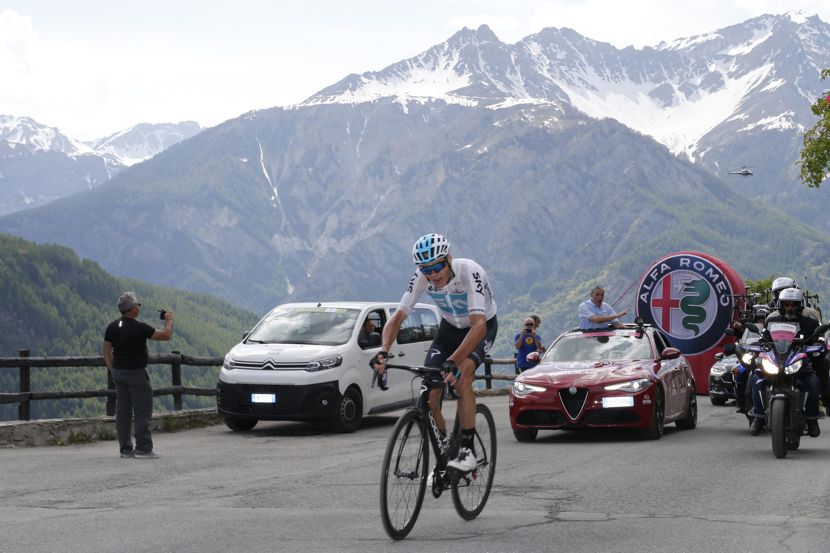
ᐧ



